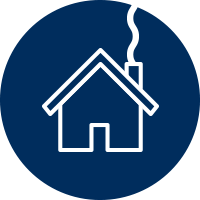Achanalt Peatland Restoration

Our uplands offer stunning landscapes for us all to enjoy. Just as importantly, they also play a key role in our daily lives. Most of our water supplies come from the uplands.
The project is comprised of vast matrix of peatland bogs located on a series of hilltops. Restoration held the key to both protecting what we have and also in giving nature a helping hand to repair the erosion damage across the whole site.
The extensive blanket bog found here forms part of a characteristic suite of habitats associated with hummock and hollow topography. Some of the habitats that can be seen here include mire systems, bog pool communities and both dry and wet heath habitats on the fringes. Many of the plants that can be easily spotted and include Cotton grasses, Bell heather, cross-leaved heath, bog asphodel, great sundew and a variety of sphagnums.
This exceptional peatland restoration project is located at elevation and comprised of three adjacent sections. From the project site there are spectacular views along the broad glacial valley through which the River Bran meanders. The project is surrounded, in all directions, by dramatic mountains.
The wildlife populates the estate from the river valley to montane lochs and to the snow-capped mountain tops. It enhances two nearby Sites of Special Scientific Interest located at Loch Fannich and Loch Strath. The project improves water quality in the River Bran and its associated lochs: Loch Achanalt, Loch Fannich, Loch a Chroisg, Loch a Chuillinn and Loch Luichart.
The initiative is part of a broader landscape strategy which entails the restoration of several vast and contiguous estates which together provide a buffer to the Wester Ross Biosphere. The Biosphere project itself is recognised by the United Nations and centres on the ‘Beinn Eighe’ National Nature Reserve, home to the internationally renowned Loch Maree and one of the most pristine landscapes in the whole of the United Kingdom.
As well as a colourful landscape the site includes over 60 different birds, nearly 100 plants and 36 different species of Fungi. Some of the most iconic species in Scotland have been spotted in the vicinity including red squirrels, golden plovers, pine martens, otters, peregrine falcons, merlins, golden eagles, sea eagles and osprey.
The water flowing off the site feeds a river and wetland system that is home to 10% of the UK's population of the wood sandpiper, an exceptionally rare ground nesting bird.
Per area of land, peatland is even more efficient than woodland when it comes to offsetting carbon. These projects achieve four outcomes. Firstly, by rewetting the landscape, the biodegradation of the peat itself is stopped, thereby preventing the site from emitting carbon. Secondly, the site accumulates biomass over time, laying it down in the peat. As such, it becomes a carbon sink. Thirdly, the restored site provides important habitat for highland species of birds, insects, amphibians, reptiles and mammals. Finally, a matrix of terraced peat areas comprised of sphagnum filters the water coming off the hill.
The project offers much needed employment in one of the country’s remotest communities. Here, seasonal work is vital for local crofters who operate the earth moving equipment which is used to create and maintain the matrix of dams and lochans. These local workers are supported by the carbon proceeds whilst supervised by a Project Manager with expertise in ecology and habitat restoration.
The estate is open to collaborating with universities and local schools with respect to ecology education and research.
Opportunities for investment include:
1. Purchase of all or part of the project Pending Issuance Units
2. Front-end investment to secure all or part of the project
Please contact richard@highlandcarbon.com with the timing and quantity of your offset requirements to receive a pricing proposal and details of associated benefits.


At a Glance: Achanalt Peatland Restoration
Location
Achanalt, Wester Ross, Scottish Highlands
Offsetting Capacity
50,963 tCO2e (pre-validation estimate)
-
Phase 1: 7,645 tCO2e
-
Phase 2: 12,741 tCO2e
-
Phase 3: 30,577 tCO2e
Scale
A 240 Hectare peatland restoration project
Biodiversity
-
Flora: a diverse array of peatland flora including sphagnum mosses, sundews, pitcher plants and many more
-
Raptors: sea eagles, golden eagles, ospreys, peregrine falcons, short-eared owls, hen harriers, merlin, red kites, buzzards, sparrow hawks and kestrels
-
Ground nesting: curlew, golden plovers, wood sandpipers, black grouse, red grouse, pipets, skylarks, wheat-ears and snow buntings
-
Loch nesting: red-throated and northern divers
-
Mammals: mountain hares, otters, red foxes, pine martens, red squirrels, badgers, red deer, sika deer and roe deer
-
Montane loch fish species: perch and trout
-
River and loch fish species: salmon, trout and arctic charr
Recognised Offsetting Framework
Peatland Code
Recognised Offset Standards
Pending Issuance Units becoming Peatland Units





